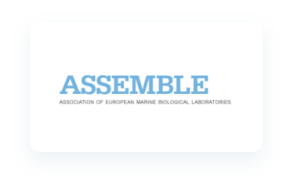
From the 19th century to today
To understand how and why EMBRC came about, we can go back to the 1870s in Europe. Around this time, marine stations were created to enable scientists to study the evolution of marine life, explore its diversity, and enable its sustainable exploitation. Scientists went from one station to another, stopping to collect material, and perform observations and experiments. Many of these marine stations exist to this day, harbouring a vibrant technical and scientific community, dedicated to the investigation of marine organisms and ecosystems.
EMBRC builds upon this legacy of a marine station 'network', aiming to continue to bridge marine stations across Europe, strengthening collaboration, and enabling researchers to gain access to their organisms, services and facilities to advance fundamental and applied marine research.
The timeline below provides an overview of the steps involved in the development EBMRC, from the initial idea to the implementation of services.




The concept for EMBRC originated in the Sixth Framework Programme (FP6) ‘Marine Genomics Europe’ (MGE) project, implemented from 2004 to 2008. MGE aimed to reduce knowledge fragmentation and establish a network of experts to enable the exchange of scientific expertise and technological resources in the field of marine biology.



EMBRC became part of the European Strategy Forum on Research Infrastructures (ESFRI) roadmap (ie a European instrument for the optimal use and development of RIs) in 2008.



The FP7 project, ‘Assembly of European Marine Biological Laboratories’ (ASSEMBLE), was the next step towards developing EMBRC. Implemented from 2009 to 2014, the project aimed to create a network of key marine biological research stations around the European coastline. The goal was to enable European biologists to study a range of unique coastal ecosystems and a wide variety of marine organisms using the most advanced approaches in modern biology.



A memorandum of understanding to establish a legal structure to operate EMBRC (EMBRC MoU) entered into force in December 2013 and was signed by seven EU member states (Belgium, France, Greece, Italy, Portugal, Spain and UK) and two associated countries (Israel and Norway). France was selected to host EMBRC, with headquarters in Paris.



EMBRC headquarters were established in Paris (September 2015), with an Executive Director and Secretariat. The EMBRC implementation phase was carried out from 2016-17 during which time the first host and member country contributions were received.
This phase was further supported by a second preparatory phase contract, under the 8th European Framework Programme for Research and Development (H2020). Major outcomes were the development of an EMBRC business plan and the application for the legal status of a European Research Infrastructure Consortium (ERIC) (final application submitted in February 2017).



The EU Commission awarded EMBRC ERIC status on 20 Februrary 2018. Formal operations started in the summer of 2018. The transition to the ‘operational phase’ was smooth, as most services were already active and accessible.
In 2018, EMBRC was also designated an 'ESFRI Landmark' on the 2018 ESFRI Roadmap. Landmarks are ‘research infrastructures’ now considered ‘pan-European hubs of scientific excellence, generating new ideas and pushing the boundaries of science and technology’.



EMBRC is projected to serve its users for at least 25 years, facilitating marine biology research for users across Europe and supporting cutting-edge research and solutions to today’s societal issues.





